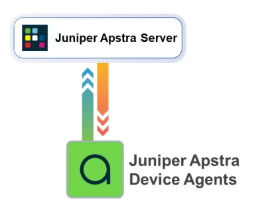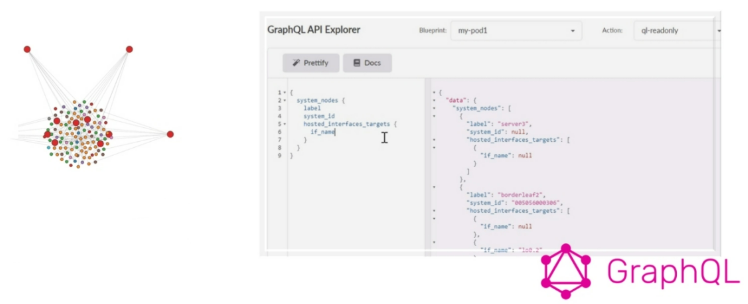EMAIL SUPPORT
dclessons@dclessons.comLOCATION
USJuniper Apstra Components Functions
There are two major components that make up Juniper Apstra software — the Juniper Apstra server and the Juniper Apstra device agents.

Juniper Apstra Server
You can download the Juniper Apstra server as a virtual machine (VM). You can download it as an open virtual application (OVA) or a QEMU copy-on-write (QCOW) format. You can run it anywhere. There is no strict latency requirement or a requirement for Layer 2 (L2) connectivity between the server and the devices you are going to manage. It will be all IP-routed packets from the Juniper Apstra server to the management ports of the devices.
The Juniper Apstra server requires eight virtual CPUs, a minimum of 8GB of RAM, and 160GB of hard disk space. The server supports high availability using an ESX DRS cluster.
To back up the Apstra server, you back up the JSON information (which is usually just a few megabytes of data) to a file server. Then, if you must, you can easily redeploy a baseline Juniper Apstra server, and once it boots (usually in under a minute), you can import the backed up files. With the JSON files imported, all the configuration of the devices comes back to exactly where it was.
The Juniper Apstra server supports thousands of nodes (switches). Within the Juniper Apstra server, there is a highly available, high-throughput, datastore called the Graph datastore. The Graph datastore represents and contains the state of the network.
Juniper Apstra Functions
Within the Juniper Apstra server, there are a bunch of different functions and processes. Every function and process runs on top of the graph datastore. Everything in Juniper Apstra has a Representational State Transfer (REST) API endpoint. There are tons of things that you can do by way of the APIs, which you cannot do with the user interface.
There is a modeling language called Graph that is a description of what you have deployed. Graph has been widely deployed by numerous companies, including Facebook, because it gives you the ability to ask questions in which you would need to pull a tremendous amount of data to get your answer
There is also a reference architecture called Data Center networking, which is a bunch of tools that enables you to build your data center networking that is all available in the UI. Intent-based analytics is another function of the Juniper Apstra server. This is a system for gathering data from devices enabling you to pull and stream that data from the devices into Juniper Apstra and then send it externally to a third-party collector if necessary.

Graph Model Explorer
In Graph modeling, there are two ways of querying the Graph datastore—one is GraphQL and the other one is GraphQE. You use each query method for different functions. In the datastore, represented in Graph, is a complete map of the network. The map is not an L2 or Layer 3 (L3) map, but it is a relationship model. As an example, the Graph model will show you that from the spine node to the leaf node, there are three other kinds of nodes or relationships that exist between them. From the spine node, you see that there is a local interface, a link, and a receiving interface before you reach the leaf node. You can query the full state of the network through the Graph API and you can craft these queries in real time.

Juniper Apstra Device Agents
The second major element of Juniper Apstra is the device agents. These are pieces of software that are installed on the device or on the Juniper Apstra server itself. These agents are more or less the translators of JSON into the device-specific language and syntax.
Normally, Apstra installs an agent on the switch itself. What that means is that you have a script or piece of software running on your network device. With some newer versions of switches, you get the ability to install agents like Puppet, Chef, or just about anything you want. With Juniper Apstra, there is an agent that Juniper has designed to meet the needs of the network engineer and network architect.





LEAVE A COMMENT
Please login here to comment.